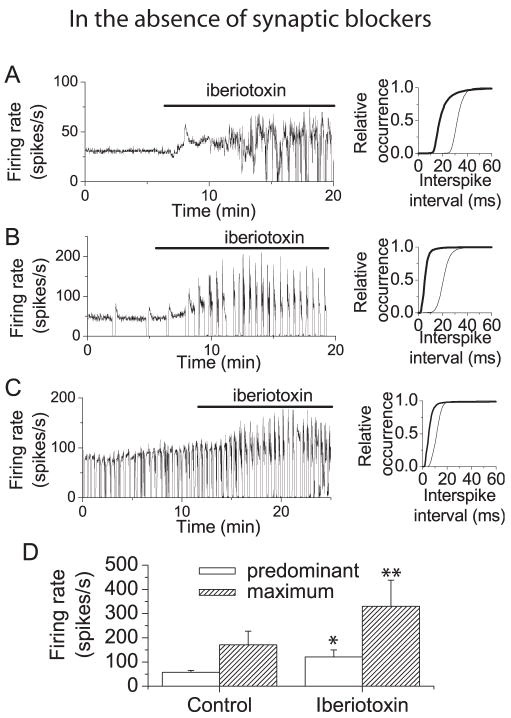Figure 1. Block of BK channels increases firing rate and promotes bursting in cerebellar Purkinje neurons.
A, Left panel: Average firing rate (calculated every 500 ms) vs. time recorded from a Purkinje neuron from a 14 day old rat which fired tonically. Superfusion with iberiotoxin (100 nM) increased the firing rate and caused the cell to fire irregularly. The cumulative distribution of interspike intervals shows a shift to shorter intervals (higher firing rate) in iberiotoxin (right panel). Thin trace, control distribution; thick trace, distribution in iberiotoxin. B, Left panel: Average firing rate vs. time from a Purkinje neuron from a 21 day old rat which exhibited the trimodal pattern of activity. Application of iberiotoxin increased the firing rate and increased the fraction of time that the cell was in the bursting mode. Right panel: Cumulative probability distribution s of interspike intervals under control conditions (thin traces) and in iberiotoxin (thick traces). C, Left panel: Average firing rate vs. time from a Purkinje neuron from a 18 day old rat which burst at random. Application of iberiotoxin increased the firing rate. Right panel: Cumulative probability distribution s of interspike intervals under control conditions (thin traces) and in iberiotoxin (thick traces). D, Mean predominant and maximum firing rates under control conditions and in the presence of iberiotoxin. Predominant and maximum firing rates for each cell were determined from histograms of interspike intervals. The predominant firing rate was defined as the firing rate most often observed (peak of the histogram). The maximum firing rate was the fastest firing rate observed at 5% of the frequency of the predominant rate. Error bars are ± SEM (n=5). Under control conditions the mean predominant and maximum firing rates were 58 ± 8 and 171 ± 56 spikes per second, respectively. In the presence of iberiotoxin the mean predominant firing rate increased to 121 ± 29 spikes per second while the maximum firing rate was 330 ±108 spikes per second. Error bars are mean ± S.E.M. (n=5). Control values were significantly different from those in iberiotoxin (*, p< = 0.07; ** p< = 0.05 by Oneway ANOVA).

